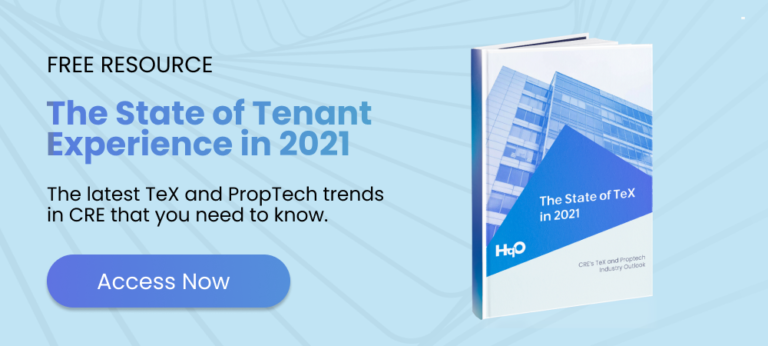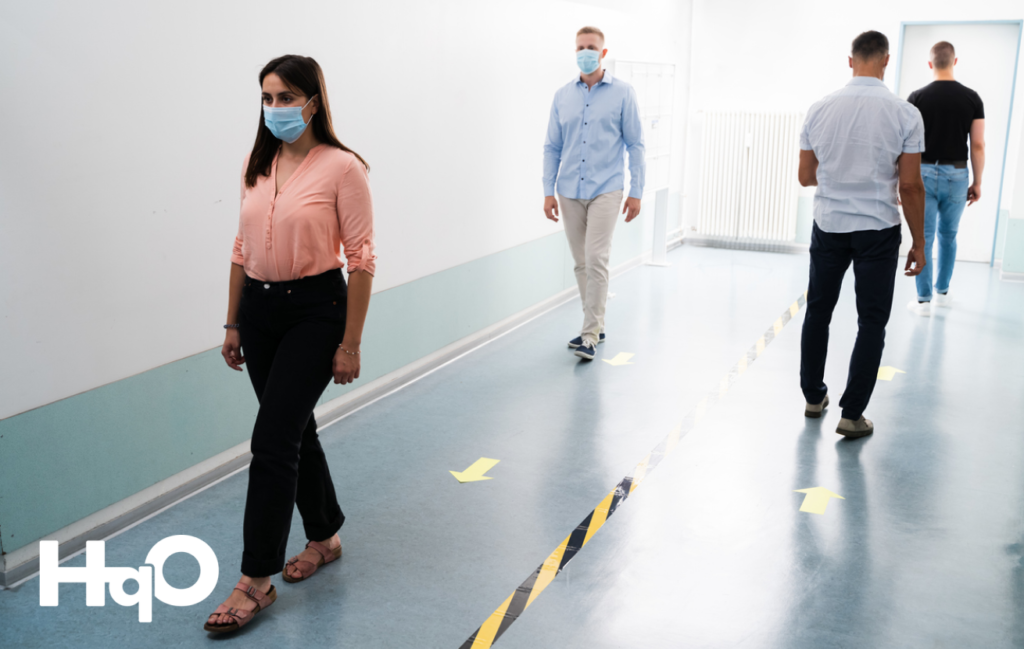Modern commercial real estate market statistics show that the workplace is evolving quickly. The key takeaway for the commercial real estate outlook in 2021 is accepted across the board: a new reality for the office, which — despite the growing prevalence of remote work — is far from over. In fact, the changes driven by the pandemic will promote an even better version of the office that meets both the evolving needs of companies and their tenants/employees.
Professionals still desire in-person interaction within productive, innovative, and collaborative spaces. A growing body of research reveals that — as COVID restrictions begin to ease — workers seek flexible arrangements that offer the best of both worlds: the ability to work remotely on occasion, as well as access to tech-enabled, intuitively-designed workspaces. This also means that office employers are eager to deliver, as long as it means getting workers back to the office.
In this commercial real estate industry overview, we’ll highlight a few of the most noteworthy trends starting to take over. We will also show how these developments defy expectations — and what office owners can do to make the most of the commercial real estate market trends in 2021.
Perception: What Commercial Real Estate Trends Suggested for 2021
When COVID first took over the professional world, many people were surprised to see how quickly and effectively companies were able to transition to remote arrangements. This shift influenced expectations for the commercial real estate market in 2021. Some experts even predicted that certain solutions, such as videoconferencing, would limit the need for physical workspaces in the future.
As of last year, commercial real estate industry trends suggested that the return to the office would be slow. For example, CBRE Market Reports forecasted that — due to remote working — the need for overall office space would be cut by 15 percent. Few anticipated how quickly the vaccine rollout would take place, paving the path for safe in-person interactions long before the year draws to an end.
Commercial real estate outlook 2021 projections from CBRE reveal that, as of late 2020, just 24.5 percent of companies anticipated a return to the office in the near-term. However, researchers still projected that — by Q4 2021 — over 98 percent of companies would be back in the office in some form.
Of course, differences exist among regions, company strategies, and employee sentiment. As of 2020, many people assumed that a significant share of workers would demand to remain remote on a full-time basis. This alleged demand for at-home work was thought to be driven both by fears of personal safety and a newfound love for working from home. It did not take into account the notion of COVID fatigue — both on a personal and professional level.
Reality: What the Commercial Real Estate Forecast Really Looks Like
A year into the pandemic, perceptions of the global commercial real estate market have clearly changed. Now, it’s obvious that many workers miss the office — and while business leaders are thankful to have made do with tech solutions, they’re ready to jumpstart innovation with in-person arrangements. This makes for a more positive commercial real estate outlook for the next 5 years.
A commercial real estate market analysis from JLL research suggests that a new — and arguably better — normal is on the way. In this altered work environment, employees will expect modern, digitally-connected amenities. This transition may not be as incremental as previously expected, with experts at JLL anticipating 80 percent of workers back in the office by the end of the year.
Current commercial real estate market predictions suggest that companies are pursuing a blend of digital and physical work solutions to address modern needs. Known as “phygital,” this approach links the benefits of both remote and in-person solutions to improve outcomes at every level. It also eases the transition back to the office, allowing for a safe and efficient hybrid approach.
Other takeaways from the latest commercial real estate statistics in the United States include the following:
- Professionals may no longer be willing to put up with long commutes or the dense, impersonal offices that often dominated prior to the pandemic.
- Even after social distancing requirements ease, workers will prefer settings that allow them to maintain a greater degree of personal space than they expected in the past.
- New tech solutions will minimize touch points within the office, allowing workers to meet in person while still reducing contact.
- Experts at LoopNet expect more companies to take on the concept of the experiential office. This provides far more than commercial space — it encompasses services that make work feel more like a valued experience than an obligation.
- As offices begin to shift their approach, many are expressing cautious optimism by maintaining their current spaces. In fact, a Cushman & Wakefield report found that renewals represented nearly one-third of the leases signed within the previous two quarters.
What This Means for Office Owners
The office of 2021 will look little like we expected both prior to and during the peak of the pandemic. The main takeaway? Most companies will return to the office in some capacity. When they do, however, the new workplace will be more flexible and dynamic than the spaces of yesteryear.
To succeed in this new reality, office owners will need to provide spaces that promote the many qualities that have proven so difficult to capture through remote solutions. Experiential offices will be key in driving this transition, but the experiences that offices provide need to feel safe and secure. Hence, LoopNet’s predictions of more boutique-style offices, featuring private lobbies and other amenities that tenants need not share with other businesses. Detailed insights can help you handle not only the immediate challenges of returning to in-person work, but also, the long-term changes brought about by COVID and new tech solutions.
To learn more about commercial real estate market trends, feel free to download The State of Tenant Experience in 2021 — CRE’s TeX and Proptech Industry Outlook.




